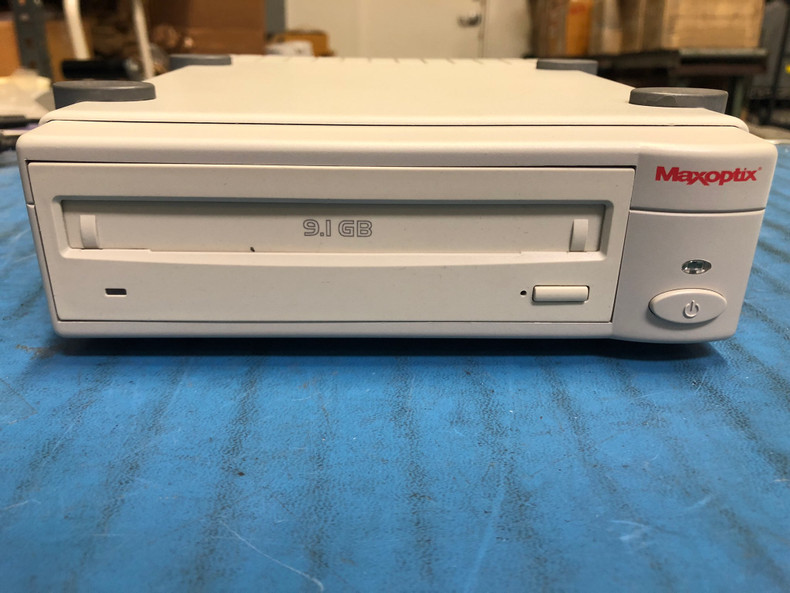Problem: You've got a ton of medical imaging studies you'd like to review for a study but they are tied up in deep freeze archival storage on MO Disks.
Solution: Build a reading station to view or bridge those studies to a modern PACS system.

For the past couple of decades medical imaging files from many modalities were backed up to MO Disks (magneto optical disks). Many Imaging departments transitioned to PACS servers but lots of small clinics and hospitals relied on 5.25" MO Disks well into the 2010s if not later.
For whatever reason, whether it be legal or regulatory or simply to review old studies - some folks need to read or import the old imaging files stored on MO Disks. In order to do this they often reach out to us for solutions. I thought I'd write up a quick article on what you need to build a reading station for MO disks.

Lets talk about the three legs of deep data archival retrieval:
1. Hardware -
- MO Drive - Purchase one that is the same size or larger than the largest capacity MO Disk that you need to read or bridge. MO drives are backwards compatible so a 2.6, 5.2 or 9.1 drive will be capable of reading any MO Disk smaller than the drive itself. For Medical images the 5.25" 2.3GB 512 Bytes/Sector format is common with DICOM images.To remove any doubt you could purchase the largest and latest revision - a 9.1GB MO Drive.
- Desktop Computer - You also need some sort of full size desktop computer with a PCI slot capable of accepting the SCSI controller card to required to connect your MO Drive to your computer. Utilizing older operating systems will likely decrease your frustration with finding drivers for your SCSI Controller Card.
- SCSI Controller Card - We use Adaptec SCSI controllers - the AHA-2940 is a common PCI-to-fast SCSI Host Adapter.
2. OS - DICOM medical images probably don't require any special OS but WORM disks may require DO. Your best bet would be to mimic the operating system that your files your trying to retrieve were originally written with. One thing that's important to consider is that these older operating systems are no longer supported so it's of utmost importance to keep them airgapped. I would not recommend connecting them to your network directly.
3. Software - Some medical images wrote proprietary software. I used to use a repository called IDOIMAGING dot com to match file formats to software etc but it's been a long time and I'm not sure if that is defunct or not. Use at your own caution. Another open source viewing software back in the day was called OSIRIX - not sure if it's still viable but it might be worth exploring. If the folks your building the reading station for have a PACS/DICOM setup they probably already have reading software they can import into and don't need any additional software.
Once you've acquired all of your required pieces of the puzzle and plugged everything in it's time to view those files. Insert your MO Disks into your MO Drive and they should show up similar to how a USB drive works in a modern OS once the disks are mounted (read). Make sure not to accidentally reformat your archived MO Disks. If your drive is asking to reformat your disks that is generally a sign that you have some matching issues with emulating either your software or OS.

